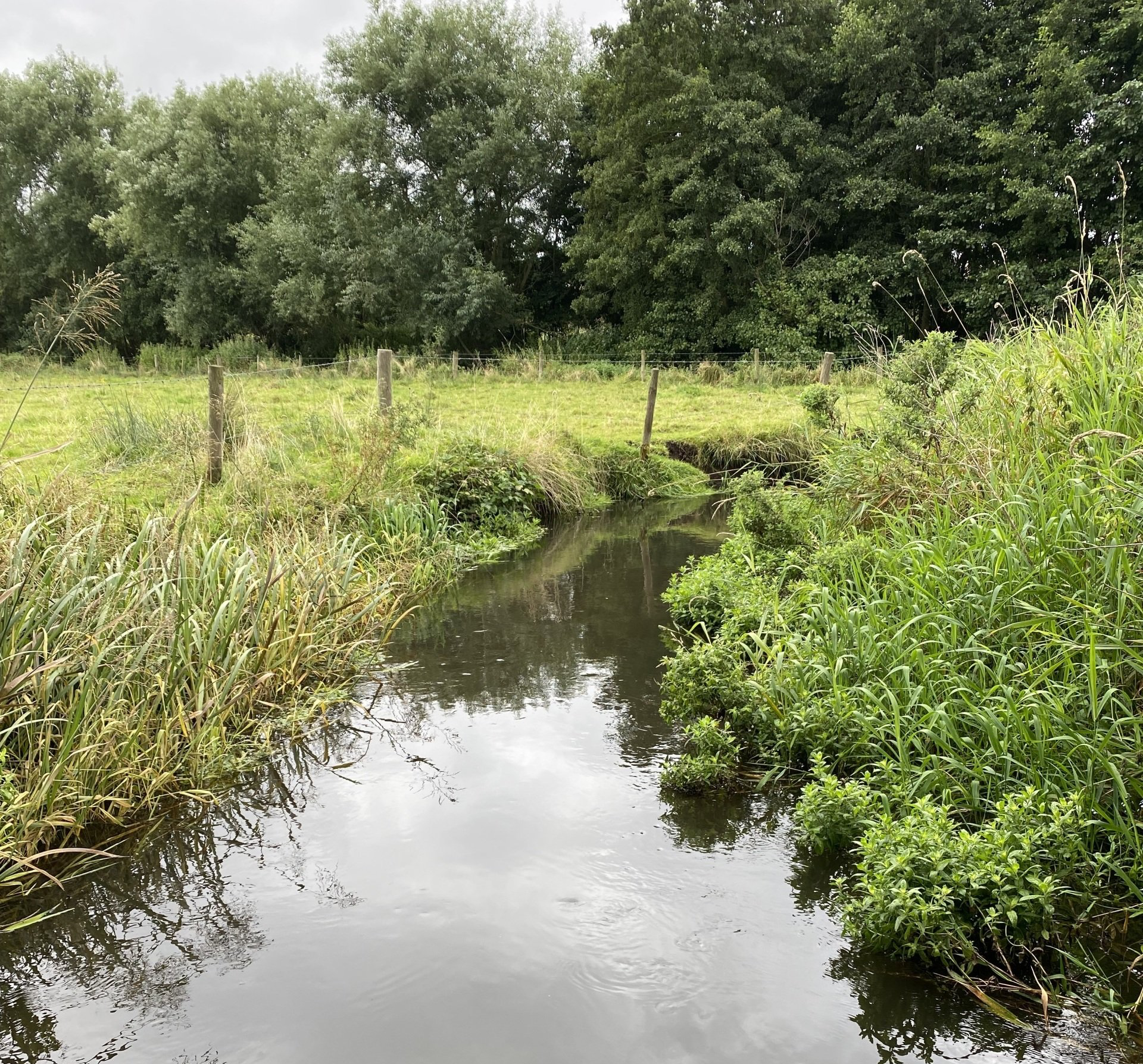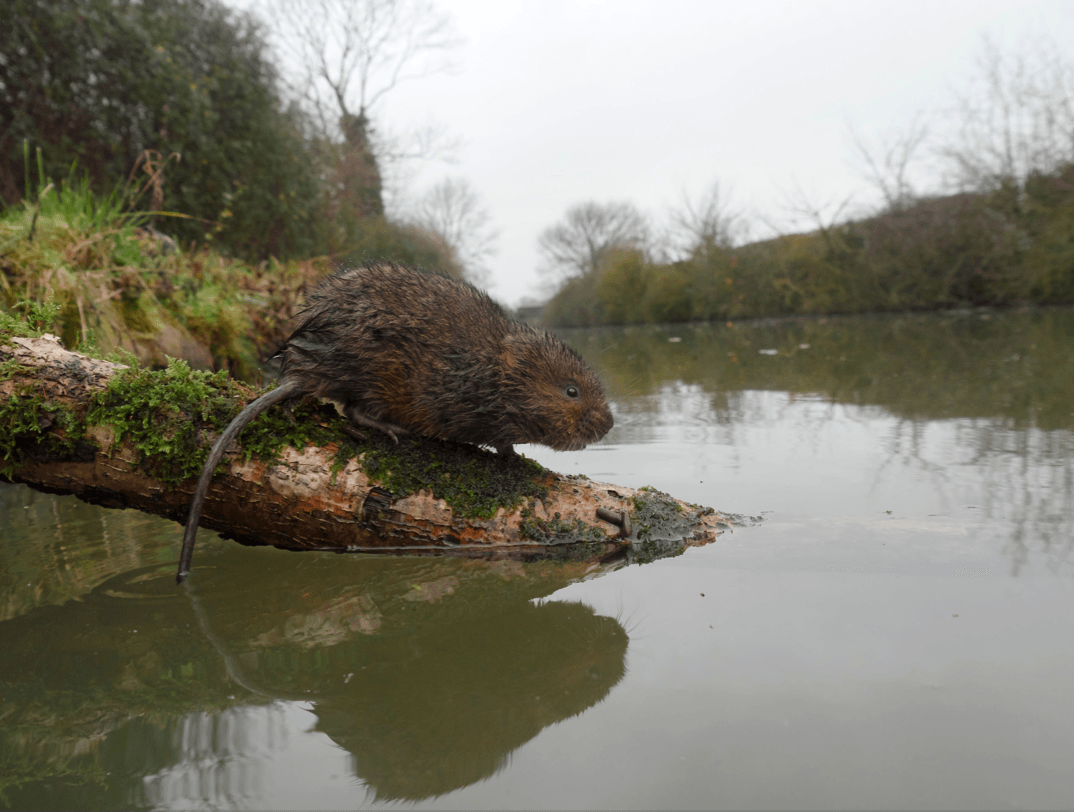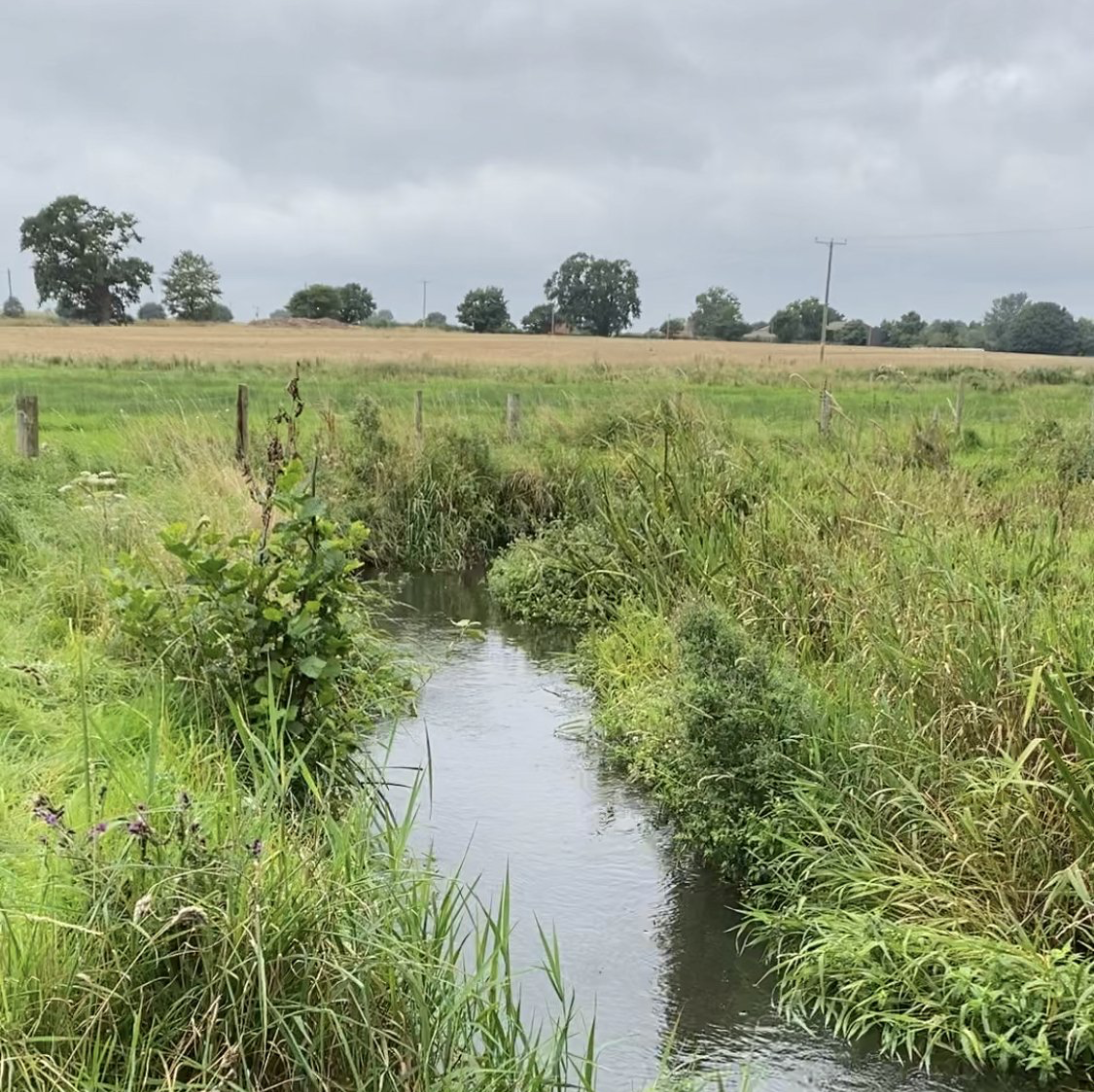Reviving A Rare Norfolk Chalk Stream
A Norfolk chalk stream that inspired the poet Sir John Betjeman is being restored as part of a £1.6m project involving the National Trust and the Environment Agency.
Home to a host of vulnerable species, rivers like The Bure have endured years of artificial straightening - pollution and extraction. Those trends are now set to be reversed, as Emma Hay of The Trust explains.

A stretch of one of the world's only 200 chalk streams is being returned to its former glory thanks to a £1.6m project led by the National Trust. Work has already begun to restore the waters of the Upper Bure in North Norfolk, and help reverse steep declines in wildlife.
Reestablishing the river's natural course creates boosts both resilience to climate change, improves water clarity, and creates habitat for a variety of species. The partnership between National Trust and Environment Agency will also unearth ‘ghost’ ponds and create wetlands in ‘corridors’ to allow wildlife to move freely.
Chalk streams are internationally significant and almost uniquely English, with 85% of the world’s examples found here in England. Often referred to as ‘England’s rainforests’, they spring from underground chalk reservoirs; with their clear, shallow waters making them havens for wildlife.

But today, many are facing challenges. Decades of agricultural pollution, artificial straightening and abstraction for drinking water have taken their toll on fish populations and left surrounding landscapes vulnerable.
Despite its importance as the source of the Norfolk Broads, Britain’s largest protected wetland, the Upper Bure’s rivers and streams are under pressure. Historically, the river supported life in the catchment by providing fertile land for farming, water meadows for grazing and power for milling – and to do so, it was heavily modified. Over time, this has reduced the health of the river and the landscape it supports.
'We rely on rivers for so much, but currently only 14% of England’s river catchments are in good health. So, we're setting out to reverse this trend through our "Riverlands" project.'
Now a four-year project by the National Trust and the Environment Agency will reverse those historic changes by increasing sinuosity and improving habitats along 13km of the river and its floodplain. The river channel, which has been over-deepened and widened, will be restored into a meandering course that winds across the landscape, including through the Trust’s Blickling and Felbrigg estates.
Work on the scheme has begun in earnest this year thanks to a grant from the Garfield Weston Foundation – the first ever received by the National Trust from the funder for nature conservation – in addition to money from the Environment Agency and public donations.
Clusters of wetlands, ditches and ponds will be established beside the river, creating ‘corridors’ for wildlife to move freely along. Around a third of the 62 ponds will be restored ‘ghost ponds’ that were filled in for farmland when food production increased in the 1940s.

Among the animals that could benefit is the water vole, immortalized by ‘Ratty’ in Kenneth Grahame’s Wind in the Willows, which was set on the banks of an English chalk stream. Once common in our rivers, water voles are now the fastest declining mammal in Britain. East Anglia is one of the animal’s last strongholds and experts hope the project will increase shelter and food for the established population at the Bure.
The pond corridors will also support dragonflies and toads, while the installation of a fish pass will help trout and eel populations, enabling them to travel around old milling infrastructure that currently blocks their natural migration. Other plans to boost wildlife include reintroducing the bullhead – a strangely shaped fish also known as Miller’s Thumb.
Arguably one of the most beautiful types of river, chalk streams have inspired painters such as John Constable and poets including Sir John Betjeman. In the poem Norfolk, Betjeman writes: ‘The lap lapping of the weedy Bure, A whispering and watery Norfolk sound / Telling of all the moonlit reeds around.’
"We want our rivers and catchments to be healthy, clean and rich in wildlife. Working with our partners, local landowners and tenants, we’ll be looking to improve water quality and habitats along the river. This will help ease passage for fish and protect endangered species such as the water vole and eel." - National Trust
Emily Long, the National Trust’s Project Manager, said: “Chalk streams are a quintessential part of the English landscape and have huge ecological value – they’re our equivalent of rainforests. Protecting these special habitats, as well as the species they support, is fundamental in our battle against the biodiversity crisis.
“The Bure is one of four main rivers that feeds into the Norfolk Broads and so has a significance beyond its banks in ensuring the health of the UK’s largest protected wetland. This project is about bringing benefit to an entire catchment. We’re looking at everything from riverbanks, meadows and ponds to footpaths, community engagement and volunteering.”
Amy Prendergast, Catchment Coordinator for the Environment Agency, said: “It’s exciting to see our vision for the Upper Bure being realised. The Trust has been really forward thinking and is trialling relatively new river restoration methods to help restore the natural function of this precious chalk stream. Upper Bure Riverlands is a significant project and demonstrates what can be achieved by working in partnership. We hope this project will address key pressures in the Upper Bure, which will help fish populations and work towards achieving a ‘Good’ status under the water regulations.”

Rising in Melton Constable, the Bure flows through the Jacobean Blickling Estate, where it meets the Scarrow Beck tributary, which has passed through Felbrigg, before descending to the Broads. Both historic sites have felt the impacts of heavy rainfall events and prolonged dry weather due to the changing climate in recent years.
In addition to restoring a section of the main river, the Trust aims to revert a small headwater stream at Felbrigg to its original flow before human interference through an approach known as ‘Stage 0’. The pioneering method was first trialled in the UK in 2019 by the charity. It allows water to meander like ‘the branches of a tree’ to slow river flow, increase wildlife and reduce flooding.
To further boost the catchment’s resilience to climate change, the Trust will plant 8,000 trees along the river edge and within the landscape to absorb the effects of heavy rainfall, slowing the speed at which water runs into the river.
“Seeing a clear chalk stream rippling over gravels and full of fish is something we should all have the opportunity to experience. The more we get people involved, the more they’re likely to protect these places in the future. We want people to fall back in love with rivers.”
Teams will also work with farming tenants and landowners to create farm plans that reduce soil, pesticides and fertiliser entering the water and reinstate historic hedgerows and ponds. Funding will be available for measures such as sowing cover crops to protect soil between harvests.
Community engagement also plays an important role in the project, and includes the improvement of 9km of footpaths, arts projects to tell the stories of the river, ‘balsam bashing’ events to remove the invasive plant, and a pioneering citizen science initiative.
Called ‘Stream Sleuths’, the UKRI funded research project involves local wildlife enthusiasts and anglers collecting eDNA samples that help detect cryptic and hard to find species within the river. This method allows non-specialists to produce robust ecological data - something that until recently was the preserve of experts.
WildEast Blog

Powered by LocaliQ
Follow Us
SIGN UP FOR NEWS & UPDATES
Newsletter Sign Up
Thank you for signing up to our newsletter.
Please try again later.
Privacy / Terms & Conditions / Sitemap

